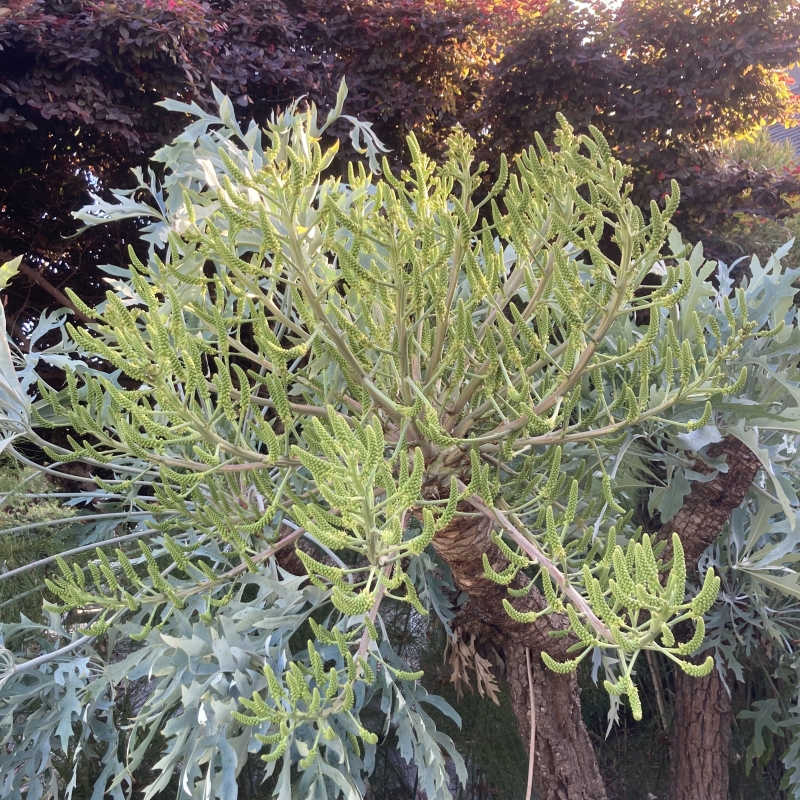

| height | 4–15ft | |
| width | 4–12ft | |
| tolerates | Drought, Deer , Heat, Pots | |
| water needs |
Low – Moderate | |
| water info |
Cussonias grow a tangle of thick succulent roots that make them quite drought tolerant once established. Deep summer watering every two weeks to a month once established is recommended. If they have good drainage, they also take well to frequent irrigation, increasing growth. If you are growing cussonias in heavy soil, be sure to let them go almost totally dry between waterings. If the tree is getting too much water, you may see rot running vertically on the trunk. Occasionally plants will recover, but should be cut below the lowest area of rot. |
|
| hardy to |
20F | |
| exposure | Part Sun – Full Sun | |
| indoor outdoor |
Outdoor | |
| drainage | In Ground: Cactus Mix, In Pots: Cactus Mix, Tolerates Sandy Soil | |
| fertilizing | All Purpose | |
| origin | E South Africa | |
| california native |
No | |
| sunset zones |
9, 13–24, H2 |
Full Sun
Six or more hours of sun beams directly landing on the plant's leaves.
Part Shade
Three to five hours of sun beams directly landing on the plant's leaves.
Part Sun
One to two hours of sun beams directly landing on the plants leaves.
Full Shade
The plant is never fully lit by sun beams,
but is in a bright spot or has dappled sunbeams playing over the leaves throughout the day.
Deep Shade
The plant never has dappled light on the leaves, and is in a place that feels dim, even on a nice sunny day.
